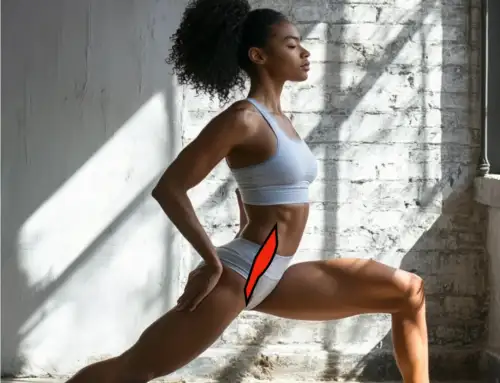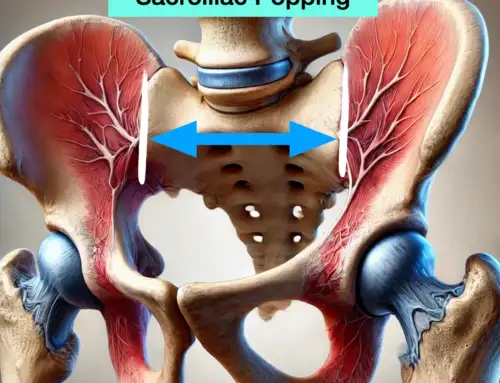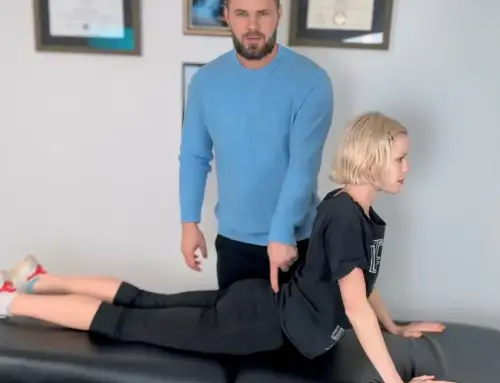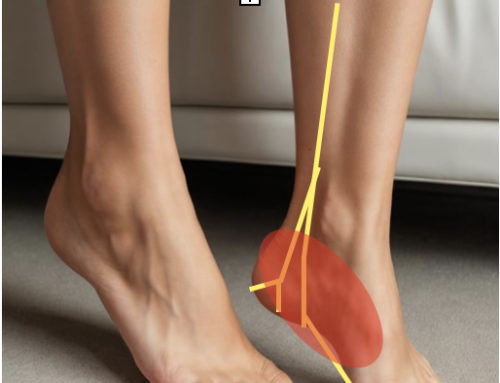Stretch for Relief: Lower Back and Leg Solutions

Sciatica begins in the lower back and travels down the back of the leg. Stretching exercises known as nerve flossing are targeted treatments for the nerve that can be highly effective at relieving symptoms of the painful sciatic nerve.
The interventions in this article are based on the most up-to-date science in 2024.
Overview of the Sciatic Nerve
The sciatic nerve is the largest nerve in the lower half of the body. It travels from the lower back down the back of the leg to the foot.
Sciatica is commonly used to describe severe back and shooting leg pain so painful that everyday activities such as walking, sitting, and standing seem impossible.
Causes
- A herniated disc in the lumbar spine (most common cause)
- Stenosis- Narrowing of the spinal canal or foremen (nerves pass through)
- Trauma
Other causes
Piriformis Syndrome—Piriformis is muscle pain from the sacroiliac joint to the outer hip bone. If the nerve pierces this muscle or the muscle is too stiff, it can compress the sciatic nerve as it passes through the pelvis.
Help to Alleviate Symptoms (Right Side)
These gentle stretches can be used in acute severe pain or chronic pain patients to create a “slide and glide” flossing effect of the nerve relative to the adjacent muscles and bones. This mobilization stretch is designed to increase the mobility or flexibility of the sciatic nerve in critical regions such as the lower back, piriformis hamstring, calf, ankle, and feet.
These stretches work because the nerve is more flexible than the surrounding connective tissue. Specific joint positions of the lower extremity can target the sciatic nerve by putting tension on it, like pulling on two ends of a string.
It’s essential to consult your healthcare professional prior to engaging in these nerve mobilizations.
It’s vital that you remember that these stretches are gentle. Only a very mild stretch should be felt, and no pain should be felt; aggressive stretching will likely worsen your sciatica symptoms!
Do the stretches in order. Once the pain has been reduced to a 2/10 on the pain scale, progress to the exercise section.
Best Interventions for Acute or Severe Sciatica (Hands Down)
Static opener
The relief position opens the hole through which the sciatic nerve passes through or exits the lumbar spine. Research has shown that this position immediately reduces compression and increases blood flow to the “pinched nerve.”
Lying on Back Nerve Stretch- Best for Disc Injuries
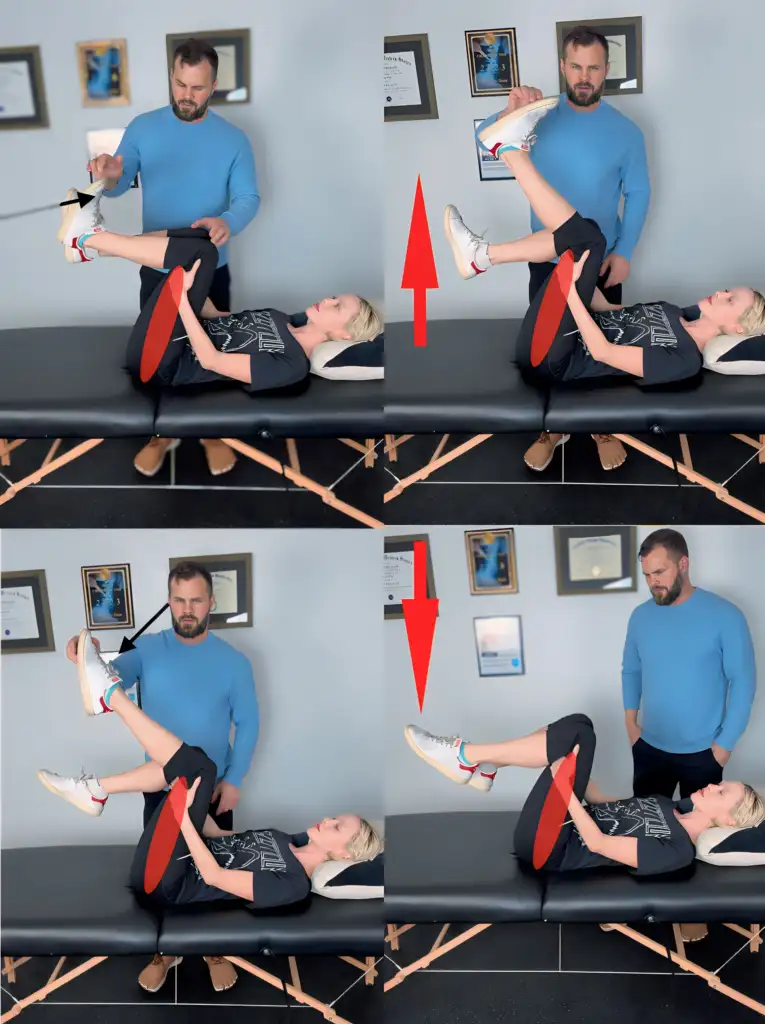
Lay on a stable surface or the floor
- The painful leg is the working leg, while the nonpainful leg is bent with a foot on the ground.
- First, flex the ankle, then straighten the leg until the first sensation of stretch is felt in the hamstring, calf, back, or foot. Stay within the first barrier of resistance.
- Return the painful leg to a flexed position, and reverse the motion of the foot and ankle so that the foot is pointed towards the floor.
- Repeat 3×15 and then see if there is alleviation of the symptoms.
If the pain gets worse or travels further down the leg, stop exercising immediately and consult your doctor.
This stretch is an excellent introduction to techniques to stretch the nerve because the lower back is flat against the table, which is a safe position in patients with active herniated discs.
Stretches for Moderate to Chronic Pain
Side-lying Version
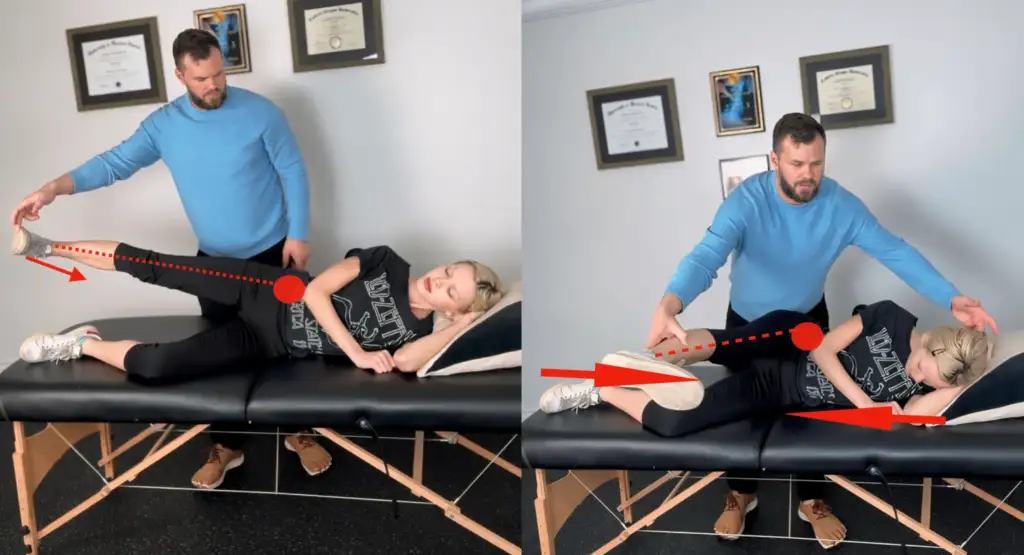
- Lay on my side with the painful leg being on closer to the sky.
- First, flex the ankle towards your nose, then kick it with a straight leg towards your face until a gentle stretch is felt somewhere in the leg. The head and neck move towards the foot simultaneously.
- Head, leg, and foot completely and immediately reverse directions after a gentle stretch is felt.
- Repeat 3×15 and then see if the pain is reduced.
Seated Version- Mild to Moderate Symptoms
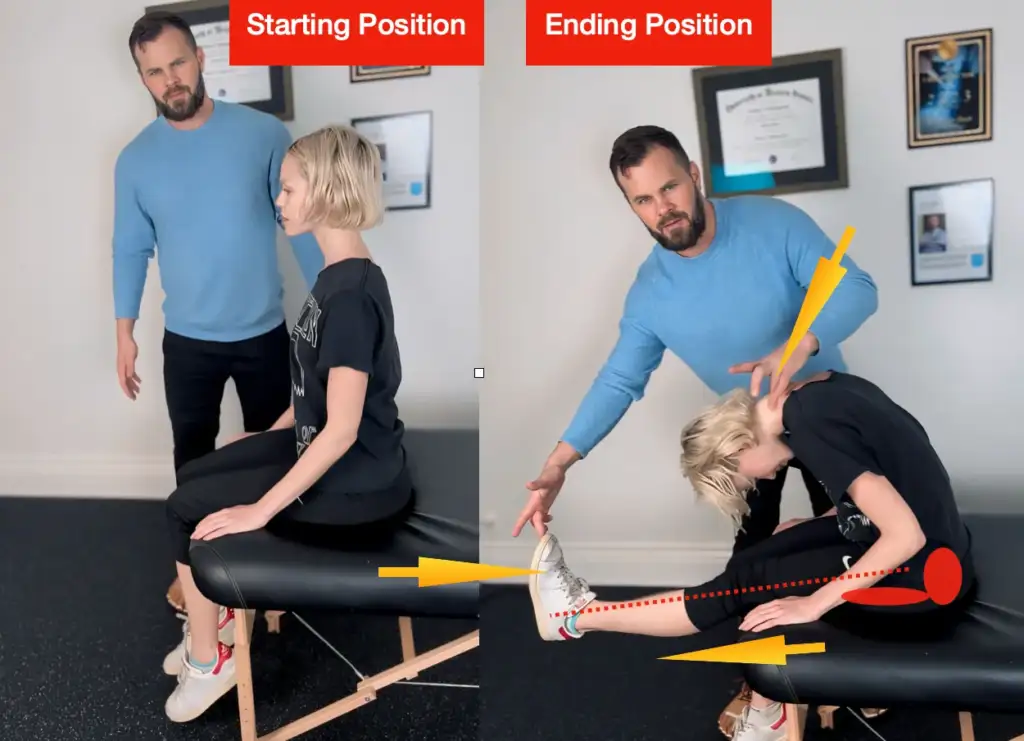
- While seated, straighten the painful leg with the ankle flexed towards the head.
- At the same time, flex your spine and head towards your foot.
- Continue until a gentle stretch is felt and return to the starting position
- Repeat 3×15 and check for a reduction of symptoms
Piriformis Flexibility
The Figure 4 stretch is a great introductory stretch for beginners.
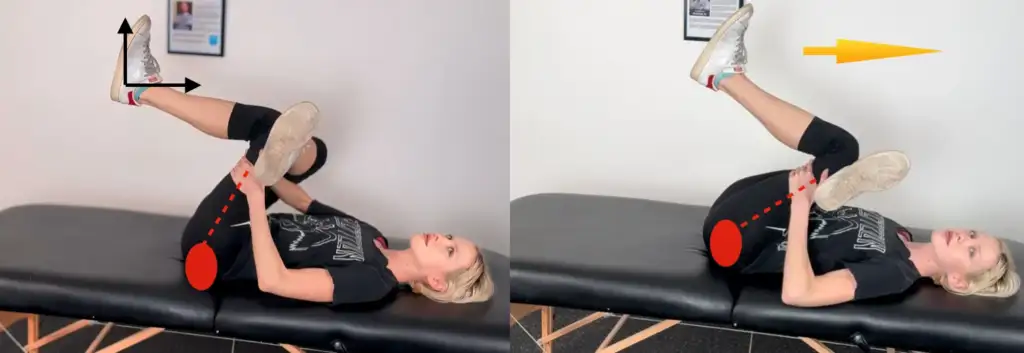
Advanced: Increased Mobility of Piriformis
- In a seated position on the floor, with an upright posture, make sure the sits bones are firmly in contact with the ground
- The arm is in front of the shoulders, with the wrist extended, and the right knee, which is bent at 90 degrees, is slowly lowered to the floor. The lower knee is only lowered to the floor as far as the sit bones can maintain contact with the ground.
- Hold for 30-45 seconds 3-5 times per day.
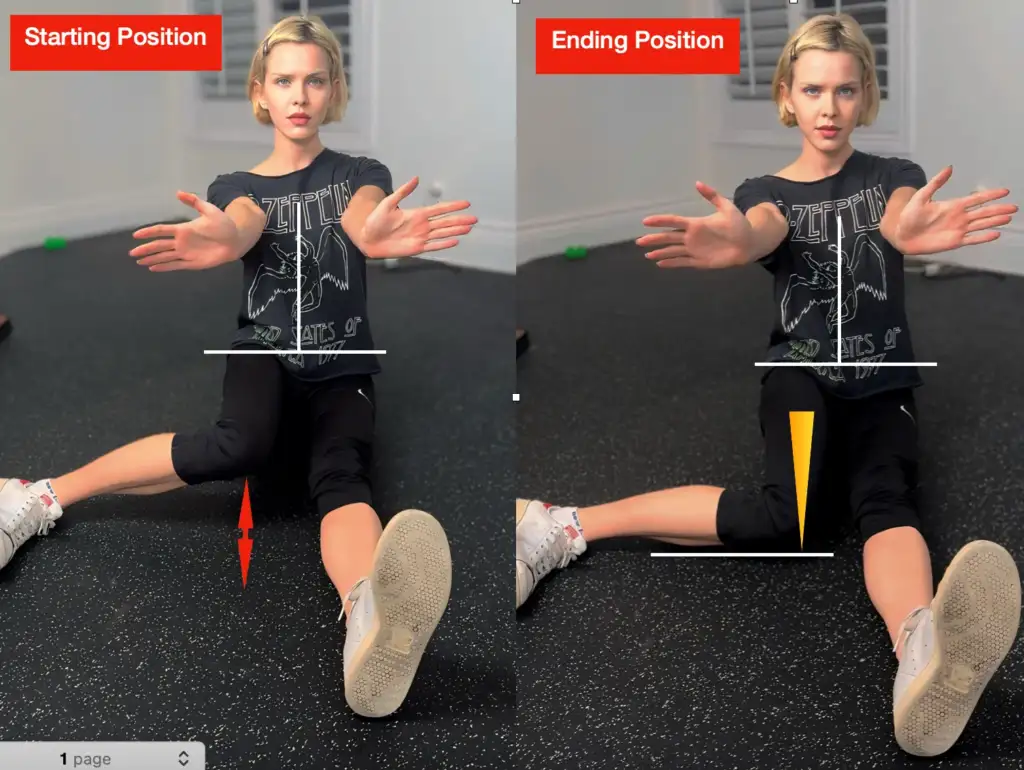
Spine Pain Relief (Herniated Discs)
Prone Press Up by Mckenzie
This exercise is the gold standard for treating lumbar disc injuries that cause sciatica. Some discomfort in the lower back during this exercise is normal and to be expected.
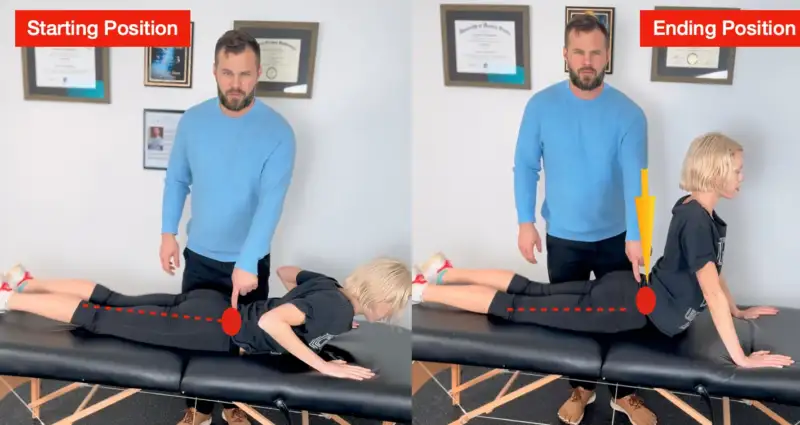
- Lay on the stomach, and use the arms, shoulders, and chest to push the upper body into a push-up position.
- The lower back and stomach are as relaxed as possible to allow for maximum extension at the location of the disc injury.
- Do 40 reps and look for a reduction of sciatica symptoms. If relieved, do 100-200 reps daily for no longer than two weeks.
Tips for Preventing and Managing Physical Health
To prevent and manage sciatica pain, it’s essential to include the right exercises in your daily routine. Strength training, stretching, and low-impact aerobic exercise can strengthen your spine, increase flexibility, and boost blood flow to affected areas.
Potential Risks and Precautions
Warm-Up and Cool-Down: Begin each exercise session with a warm-up to prepare your body and end with a cool-down to lower the risk of flare-ups.
Hydration and Nutrition: Stay hydrated by drinking fluids before, during, and after exercise, particularly during long activities like running
Listen to Your Body: Be mindful of signs of over-exertion, like excessive breathlessness or muscle soreness.
Consult Healthcare Providers: If you have chronic conditions or are pregnant, it’s essential to discuss with your healthcare provider to create a safe and beneficial exercise plan.
The contents of this article are for educational purposes only. Consult your doctor before starting a new rehabilitation program.
Reach out to Dr. Dean (sports doctor) in California by texting (best), calling 323-354-6077, or emailing at drjustindean@gmail.com
Our editorial practices include evidence-based practices, interventions, and recommendations.


